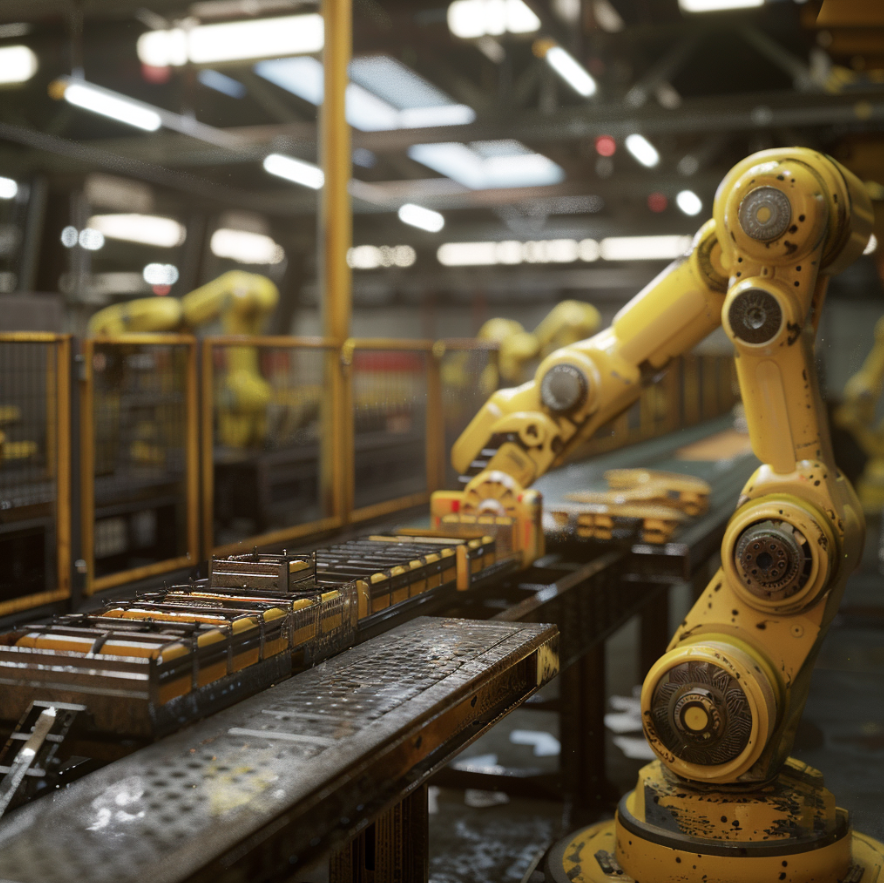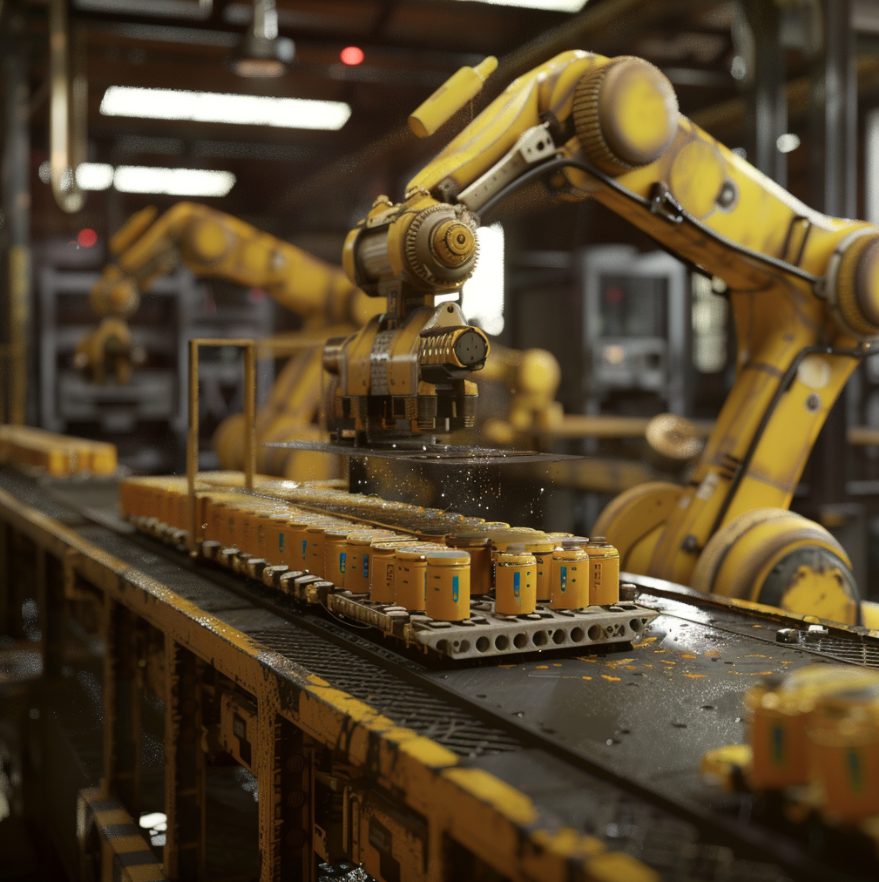

Material handling robots, also known as automated guided vehicles (AGVs), are robots designed to move materials and goods efficiently within a warehouse or factory. They use sensors and navigation systems to transport heavy loads with zero or near-zero human intervention.
Material handling robots are automated machines designed to move materials and goods efficiently in industrial settings. They rely on integrated technologies to navigate, pick up and place heavy loads with precision.
Material handling robots come in many shapes and sizes for all sorts of different applications.
Here are the most common types:
These are stationary robots that move materials around a fixed area. They typically work within a rectangular area and move materials on a horizontal plane. Gantry robots are often used for large payloads and precise, repetitive movements.
They’re commonly seen in manufacturing facilities moving heavy materials or doing pick-and-place tasks.
SCARA is a nice acronym for Selective Compliance Assembly Robot Arm. These bots have two parallel rotating joints to move horizontally in the “X” plane. They are fast, precise, and ideal for light assembly work, packaging, and sorting small parts. SCARA robots are compact and take up little floor space.
Delta robots consist of three arms connected at the base that move simultaneously to pick up and maneuver payloads. They’re fast, flexible, and energy efficient. Delta robots are used for high-speed assembly, packaging, and sorting. They can handle light payloads at rates of up to 200 picks per minute.
Delta robots require a very small footprint and are often mounted on ceilings or walls.
These robots have three linear axes of motion — one vertical, one horizontal, and one lateral. They move very precisely along these three axes. Cartesian robots are typically used for precise, repetitive pick and place work, assembly, and handling of heavy loads. They provide high precision but slower speeds than other robot types.
They’re commonly found in factories and warehouses.
There are several other more specialized material handling robots like palletizers, depalletizers, pick and place robots, and autonomous mobile robots.
Robotics technology is rapidly advancing, so new types of robots continue to emerge out of the woodwork. If anything, that trend is set to accelerate in the coming years.

There’s plenty to love about material handling robots.
Let’s take a look at the main benefits:
While material handling robots tend to be a net win, they also come with some drawbacks.
Let’s dig in a bit more:
That’s our quick rundown of material handling robots.
With their ability to automate repetitive and dangerous tasks safely and efficiently, it's no wonder businesses are eagerly adopting these bots to streamline their operations.
But, as with everything, it’s going to be up to you: Thoroughly assess whether your workflow, shop floor, and budget can accommodate one of these beauties.
If the answer is yes, then prepare to see your productivity shoot through the roof!
Transform your operations with RO1, the automation solution that won't drain your budget.
Schedule your free 30-day onsite trial! Our team will provide personalized support to ensure your robot implementation is a success.